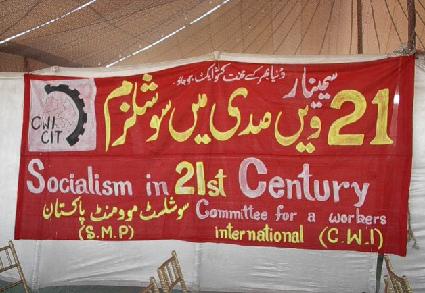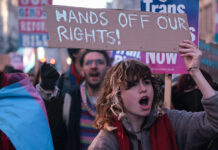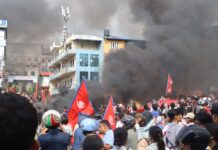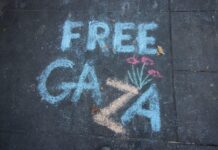Three Socialist Movement Pakistan killed in sectarian violence in Quetta
Eye witness report from Quetta, Baluchistan, by leading SMP member
Pakistan has become a killing field for people from different communities in recent years. However, the one community that has suffered most and has been singled out for targeted killings is the Shia Hazara community.
When I entered into the Hazara town in Quetta to meet and offer condolences to the families of the deceased members of the SMP on behalf of SMP and the CWI, I felt the strong sense of fear and uncertainty in this once very peaceful area. The three comrades died in two separate incidents in January and February 2013.The air was filled with grief and sorrow and everybody was angry with the provincial government led by the governing PPP. The families had just ended their vigil with the dead bodies of their loved ones who were killed just a few days previously. The agony and pain was visible on their faces.
A Sunni militant extremist group linked with Al-Qaeda called Lashkar-e-Jhangvi (LeJ) accepted responsibility for the attacks. The Hazara community is under constant threat and has been living in fear for many years now. The three SMP members, Ali Raza, Ali Hussain and Hassan Abbas were killed in these bombings. These comrades died not specifically for their political ideas or activities. They were killed because they were members of the Shia Hazara community and happened to be present at the site of the bombings. Two were killed whilst they were sitting in a café when a suicide bomber blew himself up on a busy road. The third was killed when he was busy shopping with his family in a very crowded market. He was blown up by a powerful bomb which reduced the crowded and busy market to rubble. The SMP has lost three loyal members who stood and fought with us in very difficult situation. It is a big political and organizational setback for the SMP in Baluchistan.
According to the Human Rights Commission Pakistan 2012 fact finding report, more than 800 Shia Hazaras have been killed since 1999. From 2008 to May 2012 at least 550 Hazaras were killed under the PPP-led government. In the first three months of 2013, more than two hundred people have been killed and hundreds injured in three major suicide bombing attacks. These figures are devastating considering that the Hazaras number around half a million people. Thousands have been injured and around half of them disabled for life. The number of sectarian attacks and clashes increased by 195% in 2012 compared to 2011. The number of fatalities and injured in these attacks increased by around 62% and 239% respectively.
The Hazaras are a distinct ethnic group living mostly in Afghanistan but with a visible presence in Pakistan and Iran. Lately, a growing number of members of the community have settled in Western countries in search of security and a livelihood. The Hazaras have traditionally faced persecution at the hands of some Afghan kings and rulers, primarily Amir Abdul Rehman Khan, and other ethnic groups for sectarian and ethnic discrimination. They originally lived in central Afghanistan but many had to migrate to neighbouring countries, such as Iran and British India, to escape the sectarian attacks. The Hazara community gained a foothold in Quetta by serving in the British army and doing some other tough jobs. Soldiering has been part of the Hazara life. A high proportion of the community has served in both the Afghan and Pakistani armed forces.
According to the Hazara academic and retired principal of the Government General Musa College Quetta Cantonment, Professor Nazir Hussain, “Until recently the Hazaras lived in peace and had excellent ties with Pashtuns, Baluchis and other ethnic communities. It was during the General Zia-ul-Haq era that the policy of segregation brought a change in the situation. Now we are suffering from social anarchy and the Hazaras in particular are living in Jewish-type ghettoes.” When I spoke to Abdul Khaliq Hazara, Chairman Hazara Democratic Party, he explained the situation in these words: “All this started in 2001 and reached its peak in 2011-12. Doctors, professors, students, businessmen and sportsmen have been targeted and killed. The motive behind these terror attacks is simple: to push Quetta into the hell of sectarian violence. All Hazaras in Quetta belong to the Shia sect. So far, more than 1,000 Hazaras have been killed. Most of our youth have been deprived of education; some of them out of desperation have also started joining Shia religious groups. People have lost their businesses and jobs. They cannot move freely in their own city. More than 30,000 Hazara youth and professionals have already migrated out of the country. Parents are forcing their sons to leave the country. Our people with PhDs and other high qualifications are working as labourers and doing casual jobs in Australia and other Western countries. Our younger generation has started to lose hope for their future.”
Anti-Shia sectarian groups have a significant presence in Baluchistan. These outfits are pursuing their agendas with relative freedom compared to the nationalist insurgents and the Afghan Taliban. Anti-Shia groups are well organized and have nexuses with other religious extremist militant groups including Tehrik-e-Taliban Pakistan (TTP), Al-Qaeda and Lashkar-e Jhangvi (LeJ). These are the most active and lethal anti Shia groups. LeJ operates in and around Quetta. It is now concentrated in Baluchistan and other parts of Pakistan after its terrorist camps in Kabul and Kandahar were destroyed when US forces invaded Afghanistan in 2001.
Jundullah is another active militant player in Baluchistan, mixing a religious sectarian agenda with a nationalist separatist ideology. It is an anti-Shia and anti-Iranian militant outfit which operates in the Iranian province of Seistan-Baluchistan, bordering the Pakistani districts of Chaghi, Kharan, Panjgur, Kech and Gwadar. The number of Jundullah activists is estimated to be around 800.
These different anti-Shia Sunni militant extremist groups have liaised and are supporting each other in their activities. This is quite a dangerous and deadly liaison, bringing more instability and anarchy to already violence-ridden Baluchistan.
However, the killings and atrocities are not just confined to the Shia Hazaras but people from other ethnic backgrounds have also been targeted including Punjabis. Thousands of Punjabis have been forced to leave Quetta and other areas of Baluchistan by the Baluch militant groups fighting for separation. It is not even safe for a Punjabi to go to many areas in the province. Even Hindus, Sindhis and Pashtuns have been targeted in different parts of Baluchistan. In some cases, nobody knows why a person was killed and who killed them. The different armed groups are pitched against each other in a turf war that is destroying the lives of ordinary people. The law enforcement agencies and the government have failed to protect innocent people from the different militant groups, both nationalist and religious sectarian forces. The situation in Baluchistan is very unstable and volatile. A civil war-like situation has emerged in the last few years.
The trade union movement in Quetta is still intact and fighting against sectarian and nationalistic divisions. Despite the serious threats from the different armed militant groups, the trade unions organized a united May Day rally last year in which workers belonging to the different ethnic, religious and national groups jointly marched together on the main streets of Quetta. It was a clear show of class unity. One union leader told me that it is not easy “to keep and maintain workers unity in these turbulent times. We are under immense pressure from all sides to take sides on a sectarian, ethnic and nationalistic basis and to toe the line from different groups and organizations. We are fighting and will continue to fight to keep the unity among the working class. We might go down as the situation is getting worst but we will not go down without fighting.”





